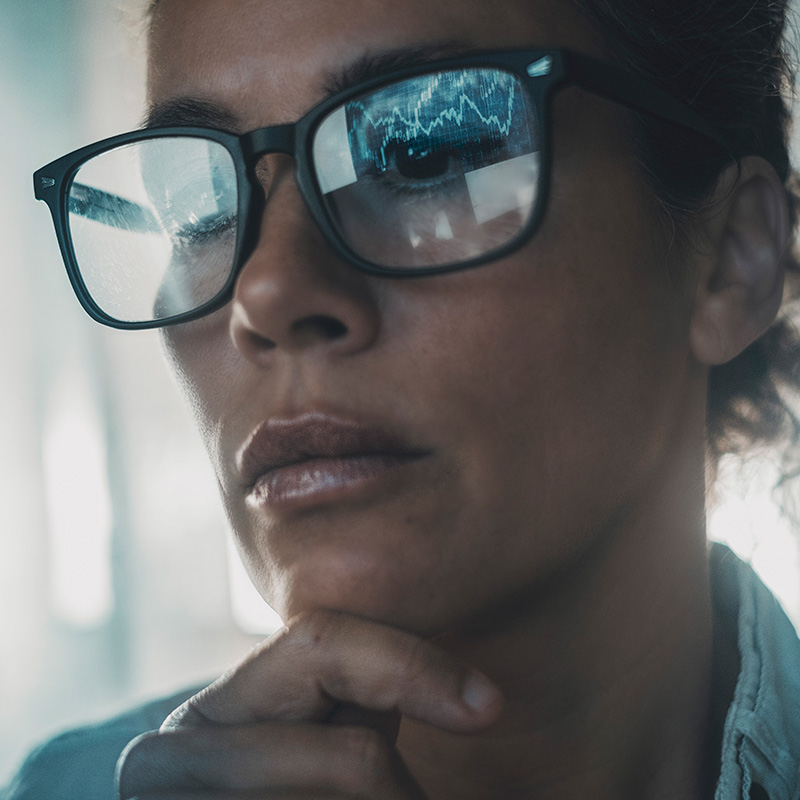Millions of people are getting ready for the upcoming solar eclipse. The total eclipse will last for 3 minutes and 38 seconds, but the partial eclipse – when the moon begins to move in front of the sun – will last about 45 minutes before and after that time.
In order to see the eclipse, everyone will need to wear special glasses with solar filters or watch through a pinhole projector. Attempting to look at the eclipse without proper protection risks serious eye damage.
Luca Zatreanu, MD, is an ophthalmologist and the Chair of Rochester Regional Health’s Department of Ophthalmology. He works at the Bushnell’s Basin and Riedman Health Center locations and explains how to recognize the signs of eye damage from the sun and safe ways to watch the eclipse.
Recognizing signs of eye damage from the sun
Eye damage from the sun is called solar retinopathy – damage to the retina resulting from sunlight.
Sunlight contains ultraviolet (UV) light rays that can cause specific damage to retinal tissue. This happens through a photochemical reaction that produces compounds that are toxic to retinal tissue in high concentrations. The cells inside the retina that capture light become damaged by these toxic compounds.
Immediate signs of solar retinopathy might include:
- Blurry vision
- Blind spots (scotoma)
- Vision distortion (seeing straight lines as wavy; check using an Amsler test)
If you start to experience any of these symptoms for more than 30 minutes, it may likely be a sign of solar retinopathy. This is not considered an emergency situation that requires same-day treatment.
“There is no treatment that is known to be effective at treating solar retinopathy,” Dr. Zatreanu said. “The good news is that many of the mild or moderate cases do resolve on their own. It just takes time. However, some cases lead to permanent blind spots or vision loss.”
Eye damage from the sun, specifically solar retinopathy, can take 2-6 months to heal or, in some cases, resolve.
Risk factors for eye damage from the sun
Oddly, people who have naturally good vision face the most risk for sustaining eye damage from the sun.
People with uncorrected 20/20 vision have a higher risk because light rays naturally focus directly onto their retinas. People who are nearsighted or farsighted have light rays focus in front of or behind their retinas, respectively, which provides a small amount of protection.
Other risk factors include eye pigmentation and certain types of medication. The darker the pigmentation of the retina, the more protection a person’s eyesight has against damage from light rays. Medications like doxycycline can make a person’s eyes more sensitive to light damage.
“If you are unsure about your eye health, now is a good time to get your eyes checked and establish a baseline for your regular vision,” Dr. Zatreanu said. “If you have any concerns or health issues that arise, you know where you started from.”
Protecting your eyes during the solar eclipse
While documenting your solar eclipse experience, avoid pointing your phone’s camera directly at the sun at any time during the eclipse. You risk not only damaging your own eyes, but damaging the optical lens on your phone as well. Take photos using a pinhole projector or through filters in solar eclipse glasses.
When choosing a set of solar glasses or filters, look closely at the manufacturing information and search for the ISO-12312-2 safety standard, which is approved by the American Astronomical Society. Sometimes this is written as ISO-12312-2:2015.
The ISO (International Organization for Standardization) is a group that sets basic quality and safety standards for products made around the world.
The ISO-12312-2 safety standard means the filters in the solar eclipse glasses not only reduce visible sunlight to safe and comfortable levels but also block all but a tiny fraction of solar UV and infrared radiation.
Solar eclipse glasses providing proper protection should be approved by the American Astronomical Society (AAS). A list of evaluated suppliers is available on the AAS website.










